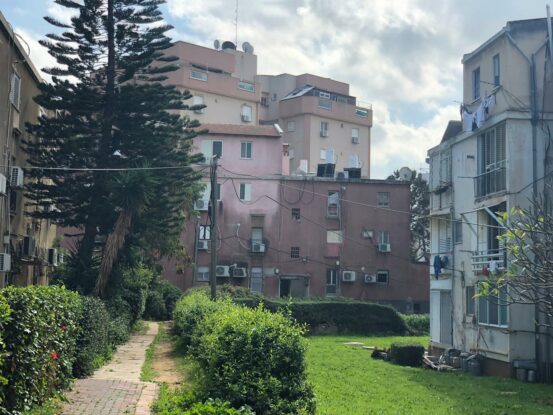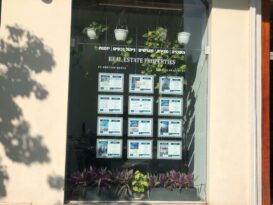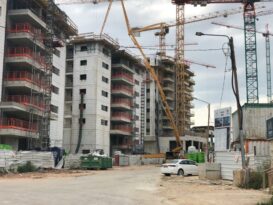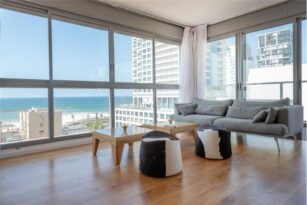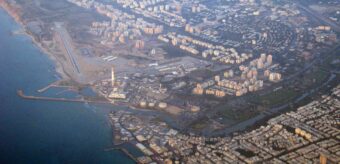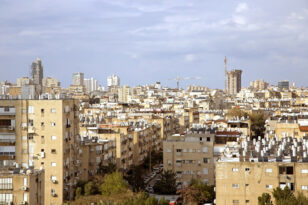For many years, the neighborhoods of South Tel Aviv were known mostly for neglect and poverty. However, the housing crisis in the north and center of Tel Aviv has sent the middle-class en masse to the south of the city, leading to an unprecedented real estate boom, reflected both in the number of construction projects and the rising real estate prices. Take a look at Buyitinisrael’s guide to the up-and-coming neighborhoods of South Tel Aviv.
For decades, “South Tel Aviv” was synonymous with neglect, underprivileged populations, social problems, and a lack of infrastructure. Even when Tel Aviv itself became the undisputed business and commercial center of Israel and one of the most expensive and sought-after cities in the world, its southern neighborhoods lagged far behind – an unkempt backyard mentioned in the media in the context of crime and welfare issues, certainly not a luxury or real estate opportunities.
About twenty years ago, however, the situation began to change with the gradual transformation of the Florentine neighborhood into one of the most sought-after areas in the city for young people and students. This shift also brought a wide range of businesses to the neighborhood, including coffee shops and restaurants as well as pet clinics, gyms, and yoga centers, a testament to the increase in the standard of living in the neighborhood. Alongside these businesses began a massive wave of construction of new apartments.
In the past few years, it has become clear that the process that took place in Florentine – now considered one of the most expensive areas in the city – is occurring throughout the length and breadth of south and east Tel Aviv, a vast area that includes tens of thousands of apartments in dozens of different neighborhoods. Although each neighborhood has its specific characteristics, a similar process has occurred in all of them: skyrocketing purchase and rental prices in central and northern Tel Aviv force the middle class to look for cheaper housing alternatives, which they find in the city’s southern neighborhoods. The increase in demand brings a wave of development, including new projects, an increase in municipal investment, a massive improvement in infrastructure, and a rise in prices.
While Israel real estate prices throughout the country have risen by an average of 100% in the last decade, in the neighborhoods of south Tel Aviv, they have jumped by almost 200%. This means that those who purchased properties in the area a decade ago saw an unparalleled ROI in any other area in the country.
Unfortunately, delving into what is happening in each and every neighborhood in south Tel Aviv is beyond the scope of this article, so we have chosen to focus on the latest developments in three particularly interesting neighborhoods just to get an idea of the trends.
Neve Ofer (Tel Kabir)
The southern neighborhood on the Holon border is most famous for being home to the Ofer Prison. Beyond that fun fact, people never had any interest in what was going on in this area. However, things have changed dramatically over the last three years. As housing prices have skyrocketed in central Tel Aviv, many people began to hunt for residential areas with more affordable prices, and Neve Ofer was willing and ready to absorb these families. In light of the demand, many real estate developers have taken interest in the neighborhood, and a number of large-scale urban renewal projects are moving forward simultaneously.
About a month ago, for example, the Tel Aviv Local Planning and Construction Committee approved a large-scale pinui-binui (evacuation and construction) plan to build 1,470 apartment units in six 30-story towers and six other buildings along the eastern side of the neighborhood. A month earlier, the Ashdar, Acro Real Estate, and White City Buildings real estate companies won a tender to build 264 new apartments.
The neighborhood is right by Park HaHorshot, one of the city’s largest green areas that has only been developed by the municipality in recent years. It is also located in an area that has quick and easy access to the Ayalon Highway via the Wolfson Interchange.
The real estate boom is leading to unprecedented prices in the neighborhood, despite the fact that they are still considered reasonable compared to the rest of the city. The price of new 4-room apartments ranges from NIS 2.5-2.7 million, and new 5-room apartments are going for about NIS 3 million, while older 3-room apartments are currently being sold for about NIS 2 million.
Neve Sha’anan
Established in the 1929s, Neve Sha’anan is one of Tel Aviv’s oldest neighborhoods, and over the years it has become one of its most problematic. Bordered by Aliya Street to the west, Ha’Rakevet to the north, Hamasger to the west, and Derech Shlomo to the south, the neighborhood has suffered from many environmental hazards throughout its existence, most notably the opening of the central bus station in the 1940s (“The Old Station”), followed by the opening of another even more monstrous central bus station in the 1990s (“The New Station”).
Aside from the noise and air pollution, the bus stations have turned the neighborhood into a hotbed of crime, drugs, and prostitution, especially when a massive wave of refugees from Africa and migrant workers from Asia arrived in the neighborhood in the early 2000s.
However, about a decade ago, along with the onset of a wave of rising apartment prices, the neighborhood began to change direction. The real estate revival and the high demand for apartments in Florentine, the neighbor to the west, also flowed into Neve Sha’anan, especially to the western part of the city, which is relatively far from the central bus station
Today, you can find new residential projects selling for NIS 45-55,000 per square meter – not far from the prices in Florentine itself. In the heart of the neighborhood, more and more new investment projects are popping up, mainly made up of small apartments intended as rentals for young people. However, it is still possible to find older properties for NIS 25-30,000 per square meter. Usually located in neglected, run-down areas, these apartments are usually rented by members of the immigrant community. However, sooner or later, the old central bus station will be demolished, and the neighborhood will likely see a revival, so purchasing one of these apartments may turn out to be a wise investment.
Shapira
Like Neve Sha’anan to the north and Kiryat Shalom to the south, the Shapira neighborhood has for many years been characterized by a population of low socioeconomic status and low-level construction. After the new central station was built on its northern border in the 1990s, the area saw a large influx of refugees and migrant workers from Africa and Asia in the first years of the millennium.
However, during the first decade of the 2000s, architects and Bohemians began to discover the potential in this neighborhood, with its relatively rural atmosphere. They began to buy properties and move in. But the more dramatic change occurred at the beginning of the previous decade, when more and more families that could no longer afford the housing costs of central Tel Aviv moved south, as well as young people from Florentine who grew up, started families, and were looking for a more family-friendly environment that was not too far away from their beloved Florentine. Because of these populations, compared to the rest of the southern neighborhoods, Shapira has a lot of entertainment options, including pubs, restaurants, and cafes, mostly located along the main street. In terms of transportation, the neighborhood is located right next to the Ayalon Highway and the Tel Aviv-HaHagana Train Station, which is on its eastern border.
Today, it is still possible to purchase old apartments of 50-60 square meters at a price level of NIS 2 million, while new 3- and 4-room apartments in the neighborhood are being sold for NIS 3 million or more.
Looking to make a real estate investment in South Tel Aviv or elsewhere in Israel. Buyitinisrael is here to assist you. Contact us today.
